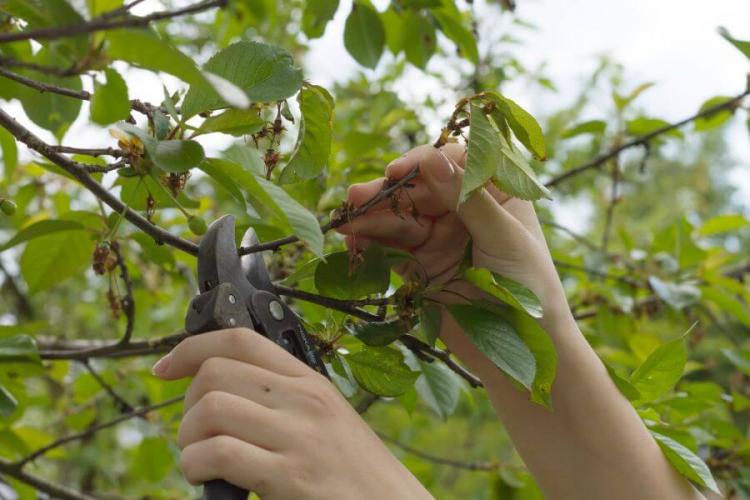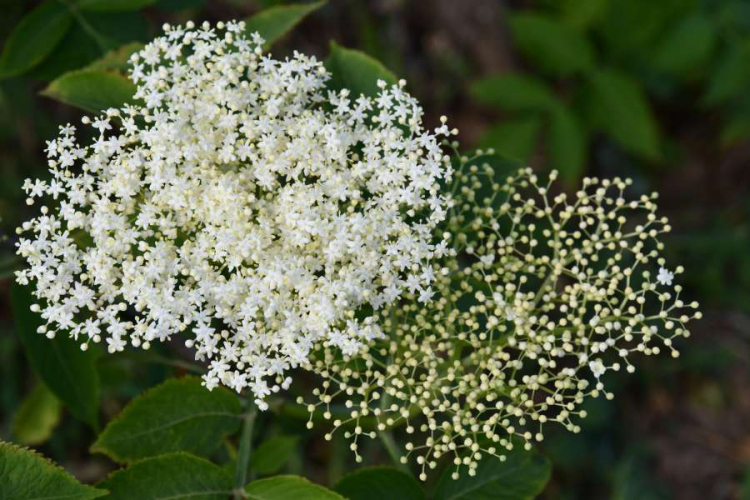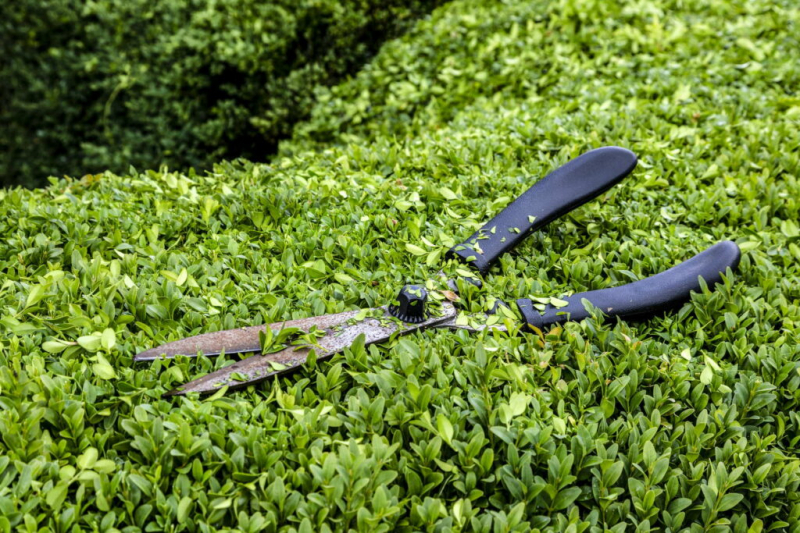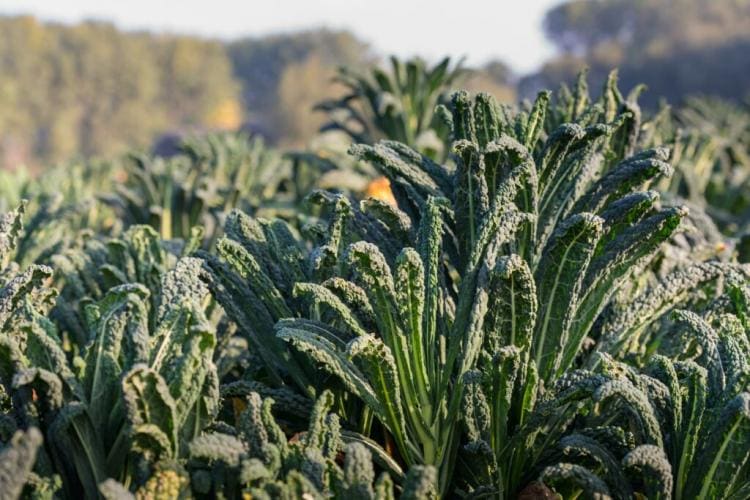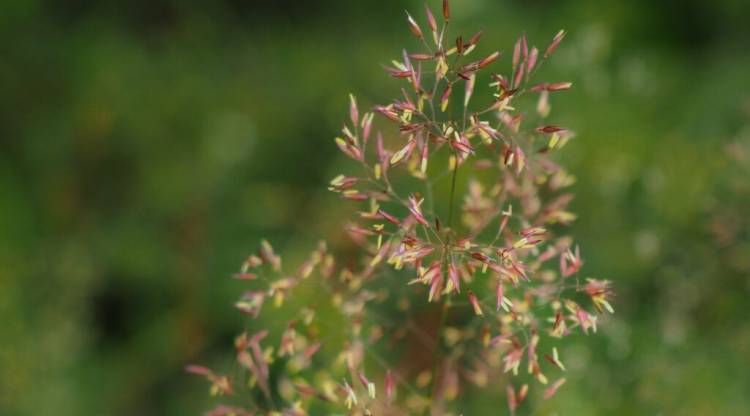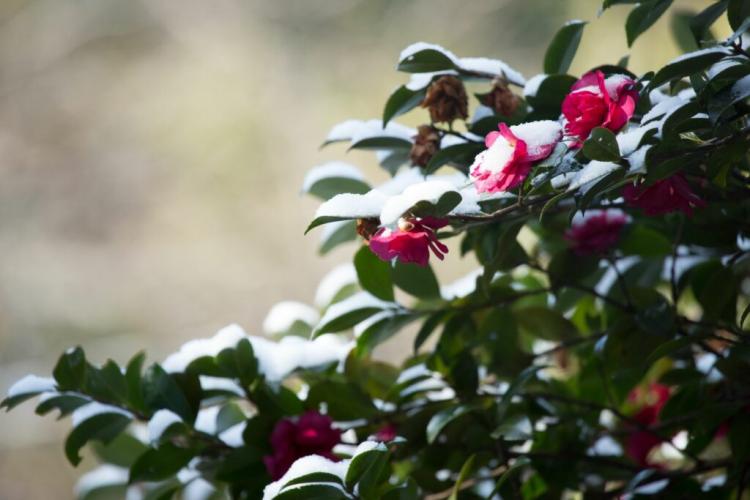Cherry Tree Cutting: Everything At The Right Time And Cut
When should you cherry trees cut? Is there a difference in pruning young and old cherry trees? How do you cut sour and sweet cherries? Find out everything you need to know about pruning cherries correctly here.
For many gardeners, there is nothing better than a cherry tree in their own garden. So that the tree brings many sweet or sweet and sour cherries, care is part of it: A cherry tree should be cut regularly so that the tree remains vital and can present itself in its full splendor. But not every cherry tree has the same requirements: The larger but lighter sweet cherries ( Prunus avium ) are usually much more vigorous than the smaller, mostly dark red sour cherries ( Prunus cerasus ) and therefore need a different cut. In this article, we will tell you how to proceed with cherry tree pruning and which differences you should pay attention to when cutting sweet cherries and sour cherries.
When do you cut cherry trees?
Table of Contents
Cherries should be cut annually, as they do not tolerate a cut that is too rare and then radical.
When do you cut sweet cherries?
While most other fruit trees are pruned in late winter, summer pruning is more suitable for sweet cherries. In the case of sweet cherries, the cut takes place after the harvest, i.e. usually between the beginning of August and the end of September. The cut in summer dampens excessive growth, which is typical for sweet cherries. In addition, cuts heal better in warm and dry weather, so that the cherry tree is less susceptible to diseases.
When do you cut sour cherries?
Sour cherries tolerate the typical winter pruning between November and March very well, so like most fruit trees, they are cut in the cold season.
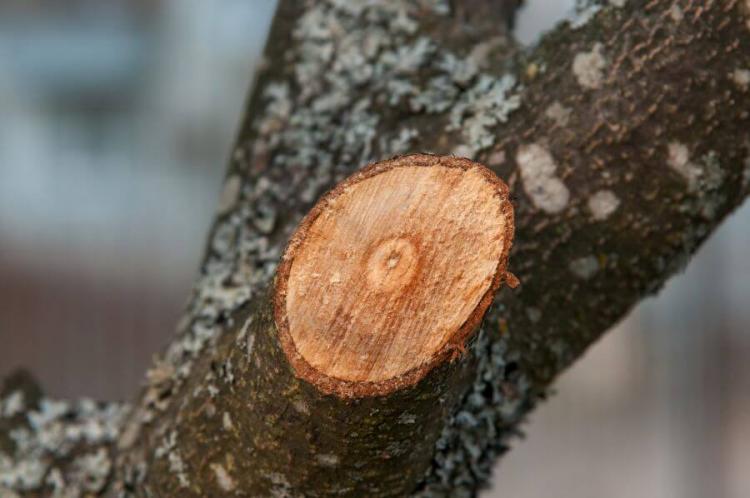
Cutting the cherry tree: instructions for the procedure
Pruning cherry trees is extremely important if you want to grow a vital, well-fruiting tree. It is important to think about your own tree and the goal of the cut before cutting:
How big is your cherry tree?
Strong-growing varieties are stimulated to even stronger growth by regular pruning measures, but they tend to produce less fruit as a result. Weak-growing varieties may have to be stimulated to new shoots by the cut to form enough fruitwood at all. It is therefore important to consider the vigor when cutting the cherry tree. Weak growing trees are cut more radically than fast-growing trees.
You might so like: Madeira Winter Cherry (Solanum Pseudocapsicum): Care And Properties
What effect does the thickness of the cut have?
Radical pruning measures stimulate vegetative growth, i.e. the formation of new shoots and leaves. They can therefore be useful if a tree hardly produces any new shoots and therefore no new fruitwood. Generative growth, i.e. the formation of new flowers and fruits, is also reduced by excessive pruning, and the tree then only reacts with the formation of more leaf mass.
How is the pruning carried out on the cherry tree?
With cherries, branches are not cut “on a string”, but “on cones”. Regardless of whether you want to remove a branch from the central shoot or divert it to a side shoot: A stub at least 7 cm long is always left, as cherries hardly overpower wounds, they just “dry out”.
Which tool do you use?
From a certain size, cherries are primarily cut with a pruning saw or, better still, a fruit tree saw and rarely with a pair of rose shears. The reason for this is that entire branches and not just individual twigs are usually removed from the cherry tree. In any case, make sure that the tool is clean, sharp, and rust-free. If the blade is dull or rusty, the interface can fray. If, on the other hand, the blade is dirty, the wound can become contaminated – both of which can lead to poor wound healing on the tree and even to an infection of the cut and should therefore be prevented in any case.

How do you decide which branches to remove?
Sour cherries in particular tend to produce unwanted dominant side shoots again and again. To prevent this, one should proceed systematically after Branch thickness ratio the section: First, the trunk and the center wheel viewed from bottom to top:
The whole thing can also be transferred to the leading branches attached to the trunk. If the guide branch becomes significantly narrower at one point, the outgoing side branch should be shortened accordingly. In this way, the desired main shoots and main branches are promoted and a beautiful crown is created instead of a chaotic shrub.
You might so like: Repotting the olive tree: frequency, timing, and instructions
How does the cut of sweet and sour cherries differ?
Overall, sweet cherries and sour cherries, despite their close relationship, differ significantly in their growth and are therefore cut differently, which is why we will go into the different methods in more detail below.
What is the aim of the cut?
A distinction is made between plant pruning, education pruning, maintenance pruning, and rejuvenating pruning. All of these are explained in more detail below.
Summary: Important Principles of Cherry Tree Pruning
- Adapt the pruning to the vigor: those of strong growth cut weaker than those of weak growth.
- The stronger the cut, the more the tree reacts with vegetative growth. This can affect fruit formation.
- Never cut on a string, but on cones.
- Tends to cut more with a saw than with scissors. Remove whole branches instead of small twigs.
- Prevent the development of too many dominant branches: Cut the branches where the main shoot tapers off significantly.
- Sweet and sour cherries are cut differently.
Pruning an old cherry tree
If an old cherry tree slowly begins to age, i.e. hardly grows, forms little new fruitwood, and accordingly only bears sparsely fruit, it can be animated to new growth with a rejuvenation pruning. But be careful: Since the tree has to generate a lot of energy for new growth, the generative growth (i.e. the formation of flowers and fruits) is often less pronounced immediately afterward. But don’t worry – as soon as the vegetative growth flattens out after being excited by the cut, the tree’s yields also increase significantly again. The steps for cutting an old cherry tree are as follows:
- In the old cherry tree, all dead or diseased branches are cut off on the cones.
- The main shoots are shortened to a quarter, overhanging scaffold branches cut back to young branches.
- Branches that grow into the interior of the crown or cross each other are also removed.
- Avoid trunk wounds over 10 cm.
- In the case of heavily aged trees, extend the rejuvenation pruning for several years.
Rejuvenating pruning of old cherry trees is best done in late February. However, it is important to ensure that the old cherry tree is only cut in dry, mild weather, otherwise, the wood can be damaged by frost.

Young cherry tree pruning
Many gardeners believe that a young cherry tree does not need pruning. In fact, at a young age, pruning the cherry tree lays the foundation for a beautiful, even crown. Before pruning the plant, however, you must first decide on a crown shape: sweet cherries are best raised to spindle or pyramid crowns, sour cherries to funnel crowns, which accommodate the multi-shot growth. If you have made your choice, the foundation stone for its later shape is laid with a plant pruning for the cherry tree in the first year after planting. Proceed as follows:
- Determine central drive or several main drives depending on the desired crown shape.
- Select several branches evenly distributed around these leading branches as side branches, remove excess branches on cones. Ideally, the selected side branches should be at a 45 ° angle to the guide branch. Unfavorably standing branches can be corrected in their growth by tying them up or down.
- Shorten the leading branches of the cherry tree by about a third, making sure that the leading branches are the same length. When training to become a spindle or a pyramid, the central shoot should be left significantly longer.
- Buds standing on top of the leading branches are removed.
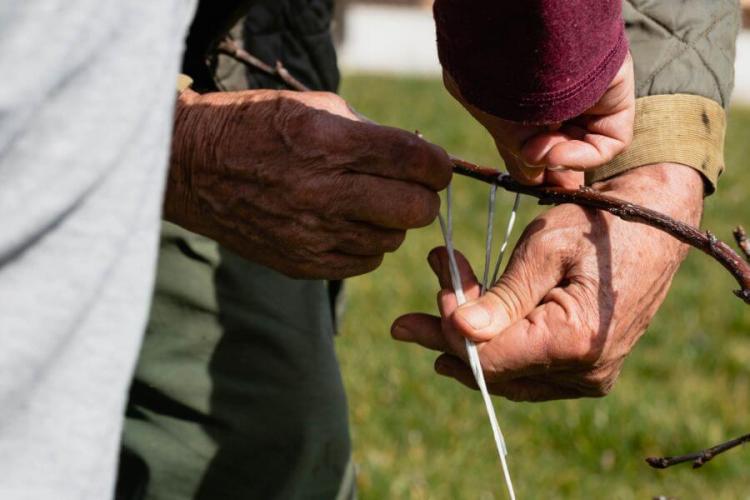
But pruning a young cherry tree doesn’t stop after pruning. Especially in very young trees less than 5 years old, the crown is still sparsely developed and needs to be encouraged to branch. For this purpose, a parental cut should be made for at least 3 years in a row. Proceed as follows:
- Shorten the central shoot and leading branches by a third. Make sure that all leading branches are about the same length and that the cut is made on an outward-facing leaf bud.
- Cut off branches of the leading branches that grow inward on the cones.
- Branches of the leading branches that grow outward are regularly trimmed to encourage branching.
- In the following years, when cherry tree pruning, the removed fruitwood is shortened to a cone with about four eyes, from which new fruitwood can then develop.
- Side shoots placed at an angle on the main shoot can – if they arise at a suitable point – be tied at a 45 ° angle. Vertical shoots are removed on cones.
Cut the sour cherry
As with any Kirschbaum section, the principles of the cherry-section above the sour cherry must be maintained even when cutting: Chopped is depending on growth starch, with a saw and facing the Branch thickness ratio, as described above. The pruning aims to avoid the formation of an overly dense, bushy crown and to reduce it to a few desirable leading shoots in the funnel crown. The sour cherry is cut between November and March.
Within the sour Kishen, the cherries types of Sweet Softsel type differ:
- Morello cherries only bear fruit on the annual shoots, so that the crown is quickly full of bare, worn shoots that do not bear fruit in the following year.
- Therefore, it is essential to cut off or at least shorten each harvested shoot – this is the only way to ensure that enough new fruit shoots form for the coming year. As a rule of thumb, three-quarters of the fruit shoots are cut back to at least a quarter of their length.
- Remove sick, dead, or very old wood and otherwise proceed according to the branch strength ratio to support the desired main shoots.
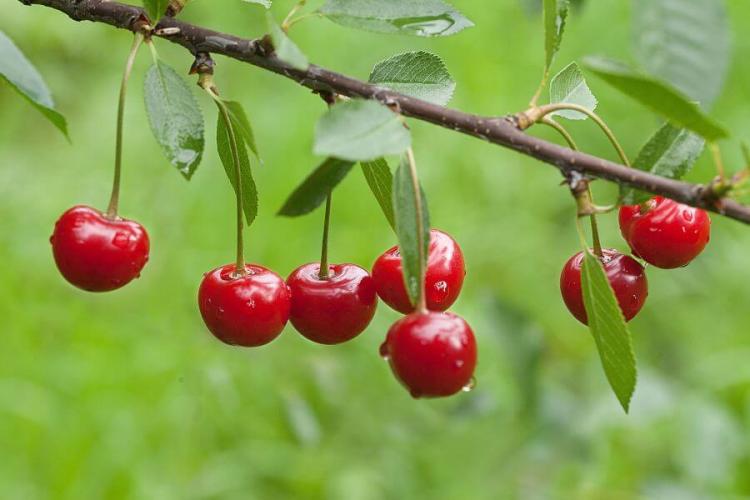
With the cut of the sweet softshell type, however, you have to proceed differently:
- Overall, the cutting of these sour cherries is considered less demanding, as they often develop a balanced mourning crown even without cutting.
- Sweet cherries differ from morello cherries in that they can also form bouquet shoots and thus fruits on perennial wood.
- For this reason, the sweet cherry is cut in a similar way to the sweet cherry.
Cut the sweet cherry
As with any cherry tree pruning, the above-mentioned principles of cherry pruning must also be adhered to when pruning the sweet cherry: The pruning is done according to the vigor, with a saw, and with a view to the ratio of the branch strength. The cut aims to maintain the dominance of the central shoot and to generate new fruitwood. Sweet cherries are cut after the harvest in summer.
In contrast to the morello cherries, the sweet cherry develops most of the fruits on short shoots on their annual shoots and the perennial bouquet sprouts. For this reason, a sweet cherry tree is cut much more cautiously so as not to remove the fruit-bearing wood:
- To prevent the inside of the crown from becoming bald, when pruning sweet cherries, thinning is the top priority: Inward-growing twigs are cut back, as are heavily branched branches with overaged fruitwood.
- Younger branches with bouquet shoots, on the other hand, should be preserved and are only removed if they grow steeply upwards or cross or rub with other branches. By removing old fruitwood and preserving new one, the so-called “floating around” of the fruitwood is achieved – because younger fruitwood provides higher quality, larger fruits than very old fruitwood.
- In addition, when pruning the sweet cherry tree, you should watch out for rotten, diseased, or dead branches – these should also be removed.
- Compared to the sour cherry, the sweet cherry has a stronger apical dominance, which means that it grows in a tree-shaped manner. Overlooking the Branch thickness ratio should to competing, are steep but withdrawn upward striving side shoots.
- For sweet cherries, summer pruning is particularly recommended to limit their strong growth.
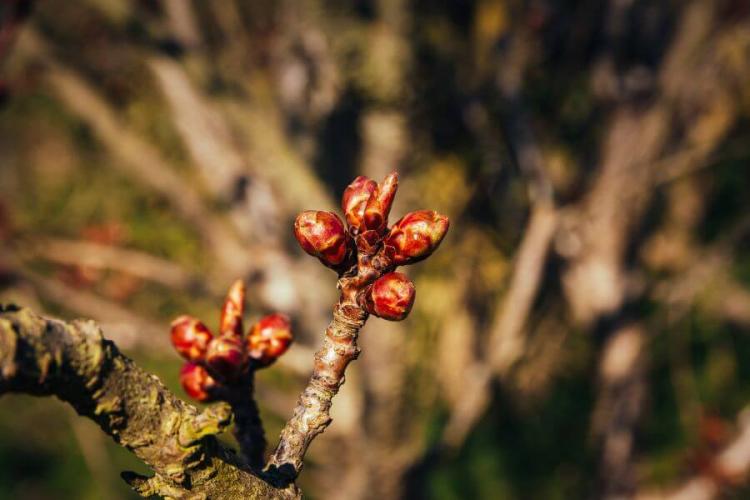
Cut column cherry
If you don’t have space for a large and weeping cherry tree, you will be happy to use a column cherry: Due to its slim shape, this growth form of the cherry is ideal for smaller gardens or can even be planted in a large container. So that the tree does not lose its elegant shape, the column cherry should be cut regularly. In fact, the pruning of a column cherry proves to be much less complicated than the pruning of its larger relatives. The column cherry does not have to be cut regularly, but only when necessary. When cutting column cherries you should proceed as follows:
- Cut back branches that are too long to 10 to 15 cm in length.
- Start well above an outward-facing eye.
- Remove sick, weak wood or wood that is growing steeply upwards.
- The central shoot is not trimmed in the first few years but can be shortened afterward if necessary.
Cut dwarf cherry
Dwarf fruit trees, such as dwarf cherries, are particularly interesting for smaller gardens because they do not require much space and can thus be integrated even in confined spaces. But you also have to cut the mini cherry tree regularly. Since dwarf cherries were also raised as spindles, you hardly have to proceed any differently when pruning dwarf cherries than when pruning large fruit trees:
- If possible, all side branches should only be at a slight incline upwards and are not cut.
- Steep branches are diverted or tied down on an only slightly inclined shoot.
- Close, parallel branches are thinned out by removing one.
- Always cut branches above a bud on cones.
- The central shoot is shortened to about 30 cm above the last side shoot.
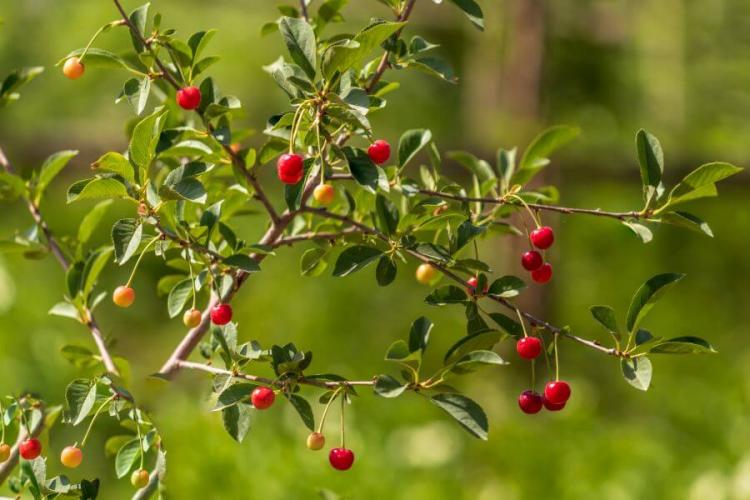
In addition to pruning, fertilizing is another important maintenance measure for the cherry tree. You can find out how to do this in our article on the subject of “Fertilizing the cherry tree“.
